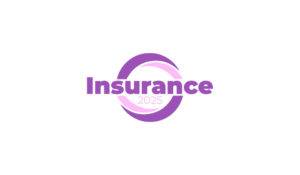I am not familiar with insurance2025.com specifically, as there are many insurance sites available online. However, generally speaking, insurance websites provide a platform for customers to purchase insurance policies, get quotes, and manage their policies online. Some insurance websites may also offer educational resources and tools to help customers make informed decisions about their insurance needs.
It’s important to note that when choosing an insurance provider, customers should consider factors such as the company’s reputation, financial stability, customer service, and the terms and conditions of their policies. They should also compare quotes and coverage from multiple providers to ensure they are getting the best value for their money.
In summary, while I cannot provide a specific opinion on insurance2025.com, it’s important to do your research and compare options before making a decision about which insurance provider to choose.
What are some common types of insurance policies offered on these websites?
There are many different types of insurance policies that are commonly offered on insurance websites. Here are some of the most common types of insurance that you may find:
- Auto insurance: This type of insurance covers damage to your vehicle and liability for injuries and damages to other people or property in case of an accident.
- Homeowners insurance: This covers your home and belongings against damage or loss from various perils such as fire, theft, or natural disasters.
- Health insurance: This type of insurance covers medical expenses and can include everything from doctor visits to hospitalization and surgery.
- Life insurance: This provides a payout to your beneficiaries in the event of your death, and can help provide financial support to your loved ones after you’re gone.
- Disability insurance: This type of insurance provides income replacement in the event that you become disabled and are unable to work.
- Travel insurance: This can cover a range of issues such as trip cancellation, medical expenses while traveling, lost or stolen luggage, and more.
- Pet insurance: This covers veterinary expenses for your furry friends, and can help offset the cost of unexpected medical bills.
These are just a few examples of the many different types of insurance policies that are commonly available on insurance websites. It’s important to carefully review the terms and conditions of each policy to ensure that it meets your individual needs.
Can you explain the difference between term life and whole life insurance?
Certainly! Term life insurance and whole life insurance are two common types of life insurance policies, and they differ in several key ways.
Term life insurance provides coverage for a set period of time, such as 10, 20, or 30 years. If the policyholder dies during the term of the policy, their beneficiaries receive a death benefit payout. However, if the policyholder outlives the term of the policy, the coverage expires and no payout is made. Term life insurance is generally less expensive than whole life insurance because it doesn’t build up cash value over time.
Whole life insurance, on the other hand, provides coverage for the policyholder’s entire life, as long as premiums are paid. It also has a savings or investment component, which means that a portion of your premiums goes into a cash value account that grows over time. This cash value can be borrowed against or withdrawn in some cases, and may also earn dividends if the policy is with a participating insurance company. Whole life insurance is generally more expensive than term life insurance due to the added investment component.
In summary, term life insurance provides coverage for a set period of time and is generally less expensive, while whole life insurance provides coverage for the policyholder’s entire life and has a savings or investment component, making it more expensive. The choice between term life and whole life insurance depends on your individual needs and financial goals.

